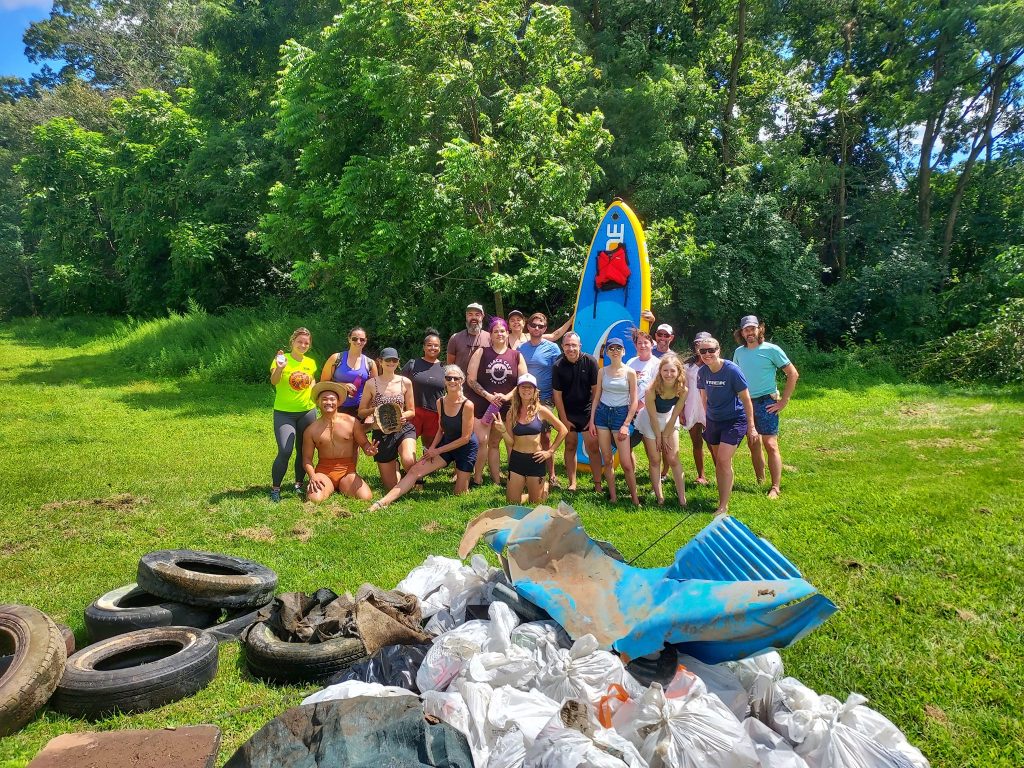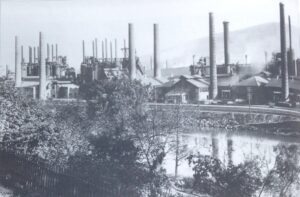The D&L Blog


When you walk along a trail, what is your favorite feature? For me it is the flowing waterways. Wide or narrow, deep or shallow, flowing or still – waterways offer an unparalleled opportunity for wildlife, recreation, and sensory experience.
Take a walk along the 165-mile D&L Trail and you will find that over 60% of the trail is within 100 feet of a waterway – specifically, the Lehigh River or Delaware River. These natural resources enhance the trail experience.
However, how much do you know about the health and history of the Lehigh River?
Flowing through the Lehigh Valley, the Lehigh River is a 109-mile tributary to the Delaware River. It serves as the backyard river for half a million people, and the keystone to Northeastern Pennsylvania’s outdoor recreation industry. However, the river has a storied history of water quality due to human activity.
As America’s industrial power began to grow in the mid 1800s, with the Valley right in the center of it all, so did its impact on the environment. Some first-hand reports go so far as to say that the Lehigh River “ran black” due to coal production during the industry’s peak. Though much has been done to address environmental impacts of the past, present industry poses new risks.
According to Lia Mastropolo, Director of Clean Water Supply at American Rivers, “Unprecedented development of open space for warehousing and distribution centers now threatens the region’s clean water and wildlife, and the communities and economies that rely on them.”
As further detailed by American Rivers, poorly planned development threatens the Lehigh River by converting critical forest and wetlands to hard surfaces—roofs and parking lots. These impervious surfaces prevent rainwater from soaking into the ground. Instead, warm, salty, dirty water runs off the pavement directly into the river and its tributaries. This flooding and pollution, and the paving of the remaining open space in the urban stretches in the Lehigh Valley, disproportionately impact downstream communities that have already borne the brunt of environmental degradation and climate change.
These risks are so great that the Lehigh River now ranks amongst American Rivers’ Top 10 most endangered rivers.
As a trail user, you may be wondering if there’s anything you can do to help support and protect the Lehigh River. And the answer is yes.
Take Action

A campaign recently launched by Delaware & Lehigh National Heritage Corridor, Take Action aims to provide community members with the tools they need to support trail connections and water quality.
To spread awareness about the campaign, DLNHC recently supported interactive events across the Lehigh Valley with various partners, including a Social Paddle and Waterway Cleanup with Miss Melanie Yoga/MMY Paddleboards, a South Whitehall Landscapes event at Covered Bridge Park with Stroud Water Research Center and South Whitehall Township, and a riparian backyard stream planting workshop with St. Luke’s University Health Network and Penn State Extension Master Watershed Stewards.
Additional events scheduled to help celebrate and share the campaign with the community:
On September 30, Stroud Water Research Center will join the “Fish and Fun” event hosted by Lehigh Valley Center for Independent Living at the Lehigh Parkway with their mobile watershed- this is a fantastic activity for families of all ages and abilities!
On October 1, Miss Melanie Yoga/MMY Paddleboards will lead a second Social Paddle and Waterway Cleanup along the Lehigh River beginning at the Rt. 33 Boat Launch Trailhead in Bethlehem Township.
Through these events, DLNHC hopes to connect community members to trail and water resources within our Corridor. There are 30 miles of trail gaps left to close along the D&L Trail, and 22% of the streams in the Lehigh River Watershed are listed as impaired. If you are interested in helping us support trail connections and improved water quality, please visit our Take Action webpage, or join us for an upcoming event!
Happy trails and healthy waterways!
Written by Brit Kondravy, Conservation Coordinator
Brit serves as the Local Lead for Lehigh Valley Greenways – one of Pennsylvania’s eight Conservation Landscapes – and manages the LVG Mini Grant Program. In her role she is able to promote conservation and recreation through place-based partnerships throughout the five-county Corridor.













